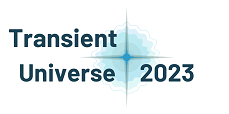Speaker
Description
Superluminous supernovae II (SLSNe II) are a sub-class of Type II SNe defined by light-curve peaks brighter than ~ -20 mag in optical bands. This definition is somewhat arbitrary. The scarcity of these events complicate the study of their origins. Systematic studies of large sample of SNe II usually do not include events with light-curve peaks brighter than ~ -18.5 mag in the V band, indicating these events are scarce too. We refer to them as luminous SNe II (LSNe II). Thanks to modern surveys, the detected number of LSNe II is growing. If persistent narrow lines are seen in the SNe spectra they are classified as SNe IIn and the extra luminosity is attributed to interaction of the ejecta with dense circumstellar material (CSM). A continuum of observational properties has been detected between SNe IIn and SLSNe IIn hinting towards a common origin. However, the powering mechanism is not clear when narrow lines are absent. Understanding the powering mechanism of LSNe II without persistent narrow lines would allow us to evaluate whether a continuum exists bridging the gap between less luminous SNe II and SLSNe II. In this talk I will present an analysis of a sample of six LSNe II followed up by the ePESSTO collaboration. We propose an interaction scenario with CSM that is not dense enough to be optically thick to electron scattering on large scales - thus, no narrow emission lines are observed. This conclusion is based on the observed light curves and spectral features. The shared characteristics of the sample support a similar powering scenario for all of them.

